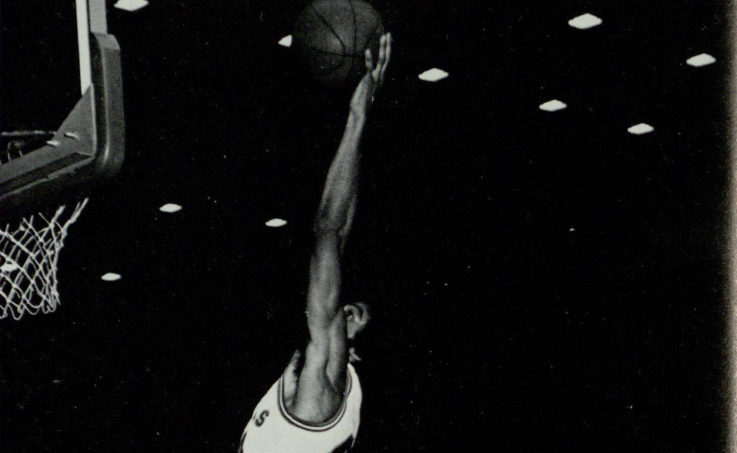
Since Georgia State basketball joined the ranks of Division 1 athletics in 1963, the school has had an ambition to one day be recognized as a premier program. Through the decades, the Panthers have defined and redefined their identity as their quest for prominence—and their support from students—has grown.
Georgia State’s basketball program began in 1963 as an independent program; that is, the team didn’t belong to a collegiate conference.
In 1976, the Panthers joined the original Sun Belt Conference with seven other programs.
The Panthers—or the Crimson Panthers, as they were known from 1988 until 1993—were a burgeoning team who were searching for ways to create an identity of their own.
The Panthers played in the Sun Belt for five seasons before leaving the conference in 1981 to once again play as an independent team.
Leaving the Sun Belt Conference was possibly fast-tracked as a result of the ill effects of a conference rule introduced by then-commissioner Vic Bubas which mandated that teams must play in the largest arena in the program’s city.
For the Crimson Panthers, that meant having to play in the home of the Atlanta Hawks, the Omni Coliseum. Even student representation of up to 500 students per game did not make a dent in the spacious Omni, giving Georgia State games a desolate feel.
It was when the Panthers joined the Trans American Atlantic Conference (TAAC) in 1983 that the program began to find its footing.
“There wasn’t as much support from the university for athletics back then as it is now,” Dave Cohen, Georgia State’s radio play-by-play announcer since 1982, said. “The first significant move from the university that they were serious about being a competitive basketball program was when [Georgia State] hired Bob Reinhart.”
Reinhart was hired in 1986 after the Panthers had one of their worst seasons up to that point, going 2-26 overall and 0-14 in conference play.
Before arriving at Georgia State, Reinhart coached Decatur High School to three state titles and spent time as an assistant coach with the Atlanta Hawks for two years.
Reinhart’s role as head coach helped with recruiting, as his reputation with high school coaches was solidified by his time at Decatur.
Reinhart, now an Atlanta Sports Hall of Fame inductee, led the Panthers for nine seasons, winning the first TAAC Conference Championship in school history and also making their first NCAA Tournament in the same season in 1991.
The team often had to overcome the challenges of being a lower funded program at a school without support from student fees.
“We didn’t have an athletic fee at that time,” Dr. Rankin Cooter, Georgia State athletic director from 1984 to 1990, said. “There was a student activity fee, and we got a portion of that.”
The athletic department would schedule games known as “guarantee games,” where a major program would pay lower budgeted programs to play in nationally televised games.
“Our budget was really low, and we didn’t have a good budget,” Dr. Cooter said. “So, as a result, we had to play guarantee games against Iowa and Maryland and schools like that. We had to play for guaranteed money in order to supplement our athletic budget.”
In a 1988 interview with Sports Illustrated, Reinhart gave his perspective on the program.
“When I came here two years ago, this place was in total shambles,” Reinhart said in the interview.
Reinhart also said that during that season, the Crimson Panthers received “$9,000 from Wyoming, $11,000 from Oklahoma and $8,000 from Georgia Tech.”
Georgia State adopted its first athletic fee in 1990 when then-President Dr. John Palms introduced it to the student body. The addition of the athletic fee, according to Dr. Cooter, helped to provide stability to the program.
The program is now entering its 55th season, and with more funding and head coach Ron Hunter, the team has an even higher ceiling. Dr. Cooter posited that Hunter’s dedication to the program is one the main reasons he has been successful (two NCAA Tournament appearances in seven seasons). Dr. Cooter also said it doesn’t hurt to have a much larger athletic budget than that of his predecessors.
